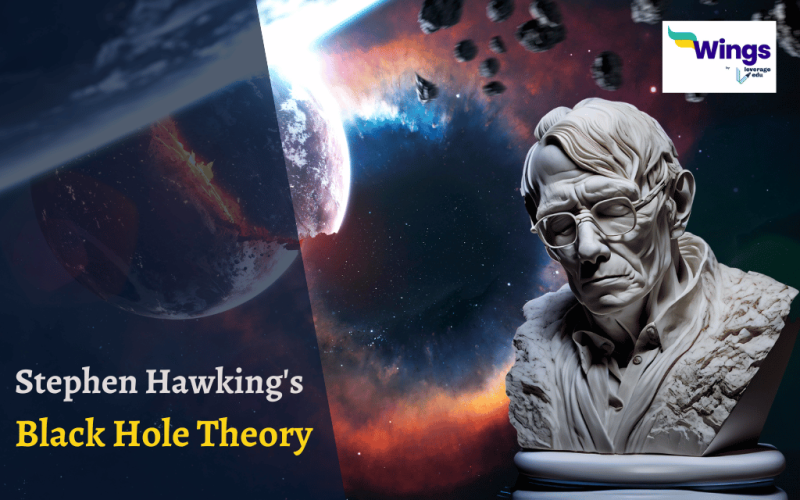Stephen Hawking has been so closely related to black holes that we often forget that he was not the one who discovered black holes. Black Holes were first discussed by the 18th-century scientists John Michell and Pierre-Simon Laplace. The first contemporary solution for general relativity that characterised a black hole was also discovered by another scientist Karl Schwarzschild. Then what is it that makes us shout Stephen Hawking whenever we talk about black holes? The answer is the Stephen Hawking black hole theory, which also made a detailed study of black holes possible.
Also Read: Noctilucent Clouds: Meaning, Formation, Facts
Stephen Hawking
Stephen Hawking was an Oxford born scientist who studied at the University College Oxford. While pursuing his PhD he was diagnosed with Ameliotrophic Lateral Sclerosis and soon lost all his muscle control. He has been an inspiration for generations for what he achieved in his life while being terminally ill.
Stephen Hawking did great research about black holes and produced many journals and publications related to that. The best-selling book authored by Hawking, A Brief History of Time: From Big Bang to Black Holes has recorded his marvellous ideas about the space-time concept and black holes.
Stephen Hawking’s Black Hole Theory
His most applauded study was around the radiations emitted by black holes that could be seen by special instruments. This radiation is called Hawking Radiation and is released outside the area of gravitational influence of a black hole. The area in which no object or light can escape the black hole is its Event Horizon and Hawking Radiation is released outside it.
The astonishing part about this study is that it discusses the death of black holes as well. In 1974, Stephen Hawking predicted that Black Holes evaporate with time by radiating the Hawking radiation. They do so by losing energy in the form of light particles outside the event horizon of the black hole.
Stephen also predicted in his paper that the strong gravitational field around the black hole will summon photons (light particles). According to the quantum field theory, the space is filled with small vibrations that can burst with enough energy into energy particles called photons. These energy particles draw energy from the black holes and if they escape the event horizon would devoid the black hole of energy.
Though this energy theft is of insignificant volume, it may drain black holes of their energy over time. He also gave various ideas about the event horizons and its area that he believed should never shrink.
His studies in the area have been used to develop research and are validated and developed by scientists today to study space and time. It is also used to study the behaviour and death of celestial objects.
Also Read: Envelop of Earth: The 7 Layers of Atmosphere
What are Hawking Radiations?
Hawking Radiations are the light emissions released by the Black Hole outside of their event horizon. It is considered a hypothetical radiation because ideally once light is inside the dense gravitational pull of the event horizon, it cannot escape it.
However, scientists today are studying such radiations released by celestial bodies other than black holes. As the Hawking Radiations are exclusively X-rays and Gamma rays it needs special instruments to study them and they cannot be detected by the naked eye.
Hope you have understood everything about the Stephen Hawking Black Hole Theory. For more such informative blogs on Science and Technology stay tuned to our General Knowledge section.
 One app for all your study abroad needs
One app for all your study abroad needs













